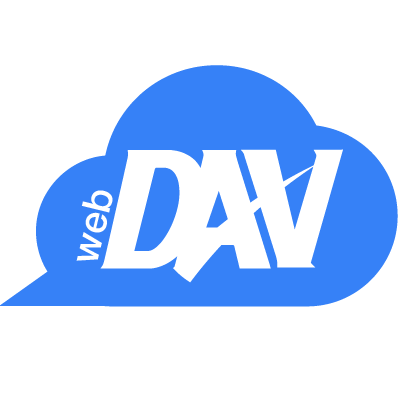WebDAV (Web Distributed Authoring and Versioning) is an extension of the Hypertext Transfer Protocol (HTTP) that allows clients to perform remote Web content creation operations. WebDAV is specified in RFC 4918 by the working group of the Internet Engineering Task Force.
The WebDAV1 protocol provides a framework for users to create, modify, and move documents on the server. The most important features of the WebDAV protocol include maintaining properties about author or modification date, namespace management, collections, and overwriting protection. Property maintenance includes things like creating, deleting, and querying file information. Namespace management deals with the ability to copy and move web pages within the namespace server. Collections are concerned with creating, deleting, and listing various resources. Lastly, overwriting protection takes care of the aspects related to file locking.
History
WebDAV began in 1996 when Jim Whitehead, a PhD graduate from UC Irvine, worked with the World Wide Web Consortium (W3C) to hold two meetings to discuss the issue of distributed writing on the World Wide Web with interested people. [1] [2] Tim Berners-Lee’s original vision of the Web involved media for reading and writing. In fact, Berners-Lee’s first web browser, called WorldWideWeb, could view and edit web pages; however, as the Web grew, it became a read-only medium for most users. Whitehead and like-minded people want to overcome that limitation. [3]
The meeting resulted in the formation of an IETF working group, as new efforts would lead to an extension to HTTP, which the IETF has begun to standardize.
As work started on the protocol, it became clear that handling both distributed writing and versioning together would involve too much work and that the tasks would have to be separated. The WebDAV group focuses on distributed writing, and left versioning for the future. (Delta-V extension adds versions later – see Extensions section below.)
The WebDAV working group completed its work in March 2007, after the Internet Engineering Steering Group (IESG) received additional updates to RFC 2518. Other unfinished extensions at the time, such as the BIND method, had been completed by their respective authors, apart from the formal working group.
Implementation
WebDAV extends the standard HTTP header and verb set allowed for request methods. Added verbs include:
COPY
copying resources from one URI to another
LOCK
put a lock on the resource. WebDAV supports shared and exclusive keys.
MKCOL
create a collection (aka directory)
MOVE
move resources from one URI to another
PROPFIND
fetches properties, stored as XML , from a web resource. It’s also overloaded to allow one to retrieve a collection structure (also known as a directory hierarchy) from a remote system.
PROPPATCH
change and delete multiple properties on a resource in one atomic action
UNLOCK
remove key from resource
Server support
Apache HTTP Server provides WebDAV modules based on davfs and Apache Subversion (svn) .
Caddy has an optional WebDAV module [4]
lighttpd has an optional WebDAV module [5]
Mailfence offers WebDAV support via virtual drives + You can connect external drives to Mailfence Documents [6]
Microsoft’s IIS has a WebDAV module.
The MyWorkDrive server supports WebDAV for accessing files via the IIS module. [7]
Nextcloud is an offshoot of ownCloud, and therefore also offers full WebDAV support[8] and third-party modules[9]
Nginx has a very limited optional WebDAV module[10]
ownCloud is a PHP cloud storage application that offers full WebDAV support[11]
SaberDAV is a PHP application that can be used in Apache or Nginx instead of bundled modules
Client support
Git supports writing to remote HTTP, although the “smart” Git protocol for HTTP that requires dedicated server support is made the preferred protocol over WebDAV
Linux via GVfs , including GNOME Files and via KIO , including Konqueror and Dolphin
macOS , including native support for CalDAV and CardDAV , whose design is based on WebDAV
Microsoft Windows, including native support in Explorer
Microsoft Office
The need for digital IT is needed in daily activities, Bead IT Consultant is the right choice as your partner, visit our website by clicking this link: www.beadgroup.com

